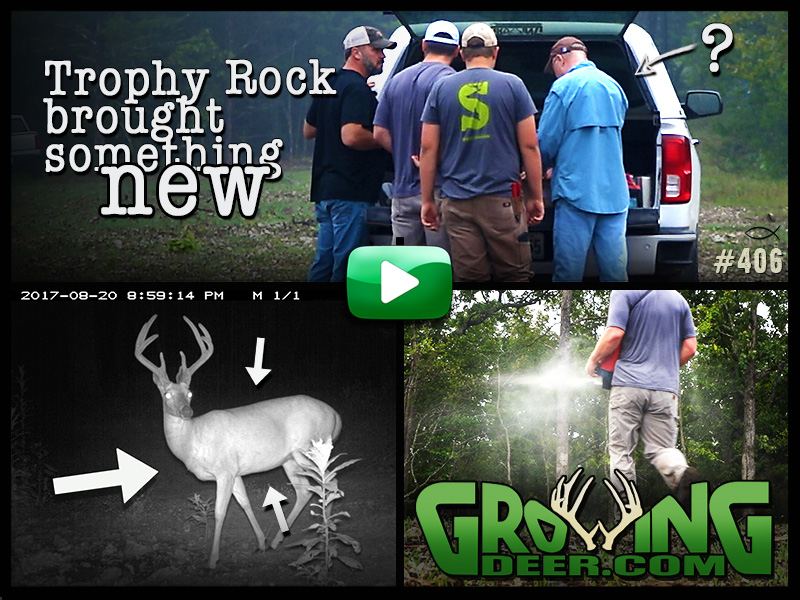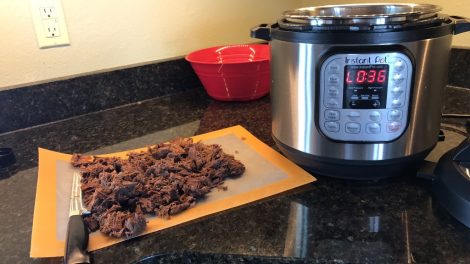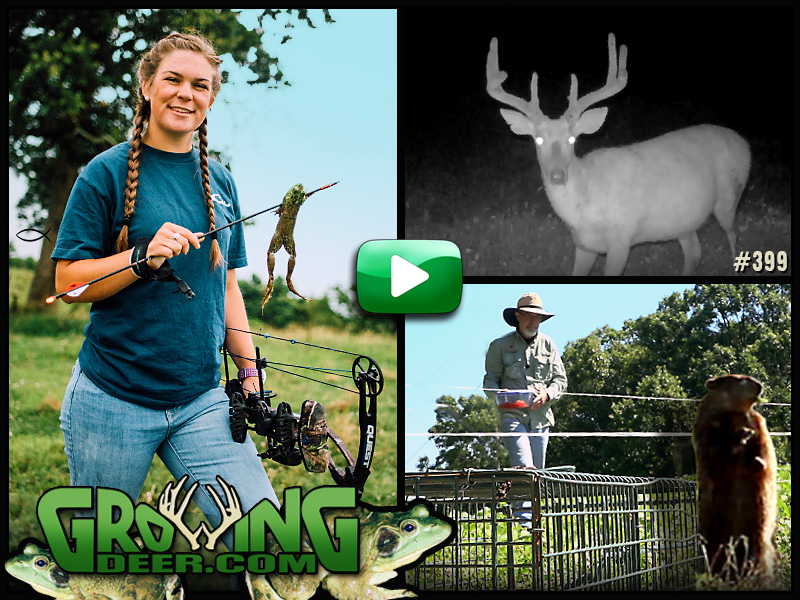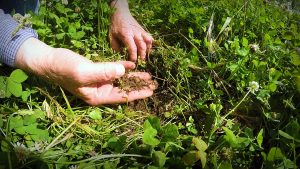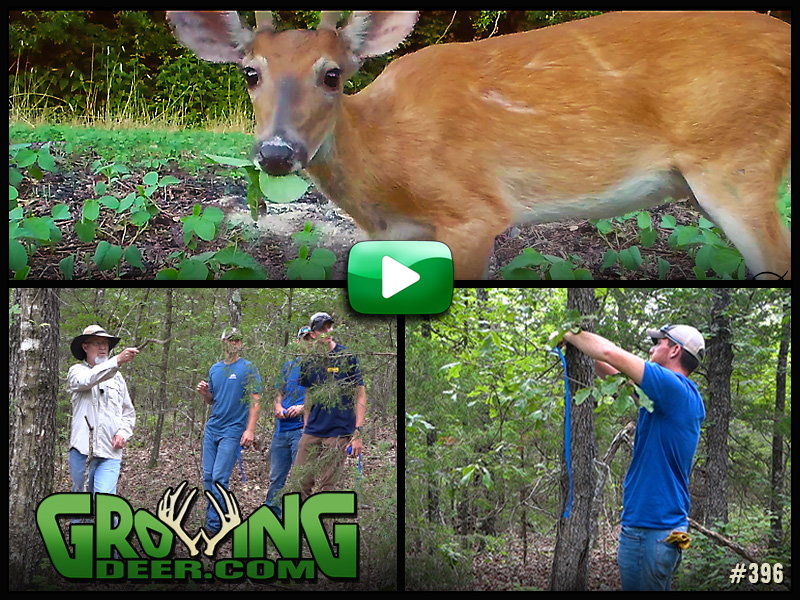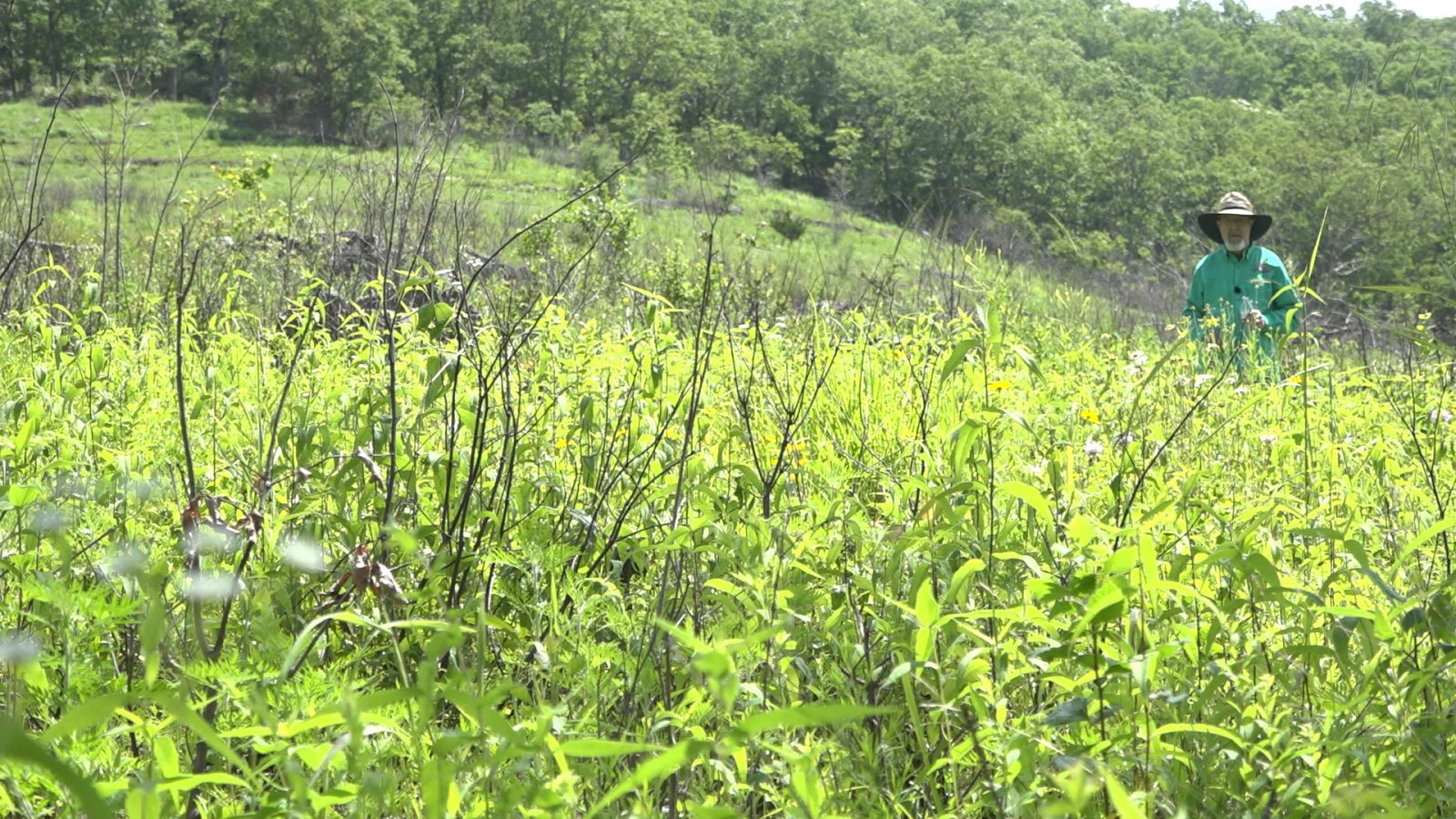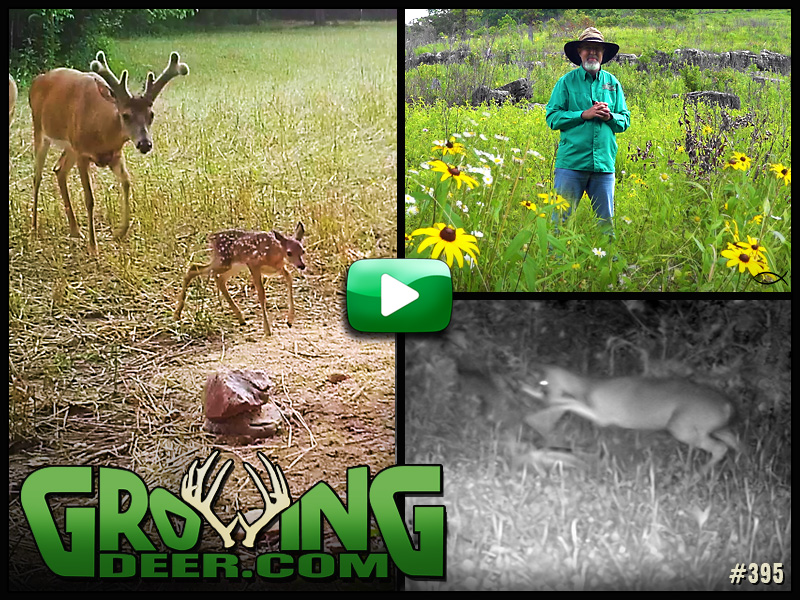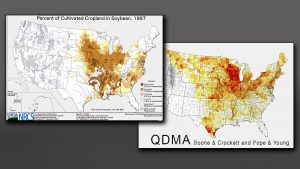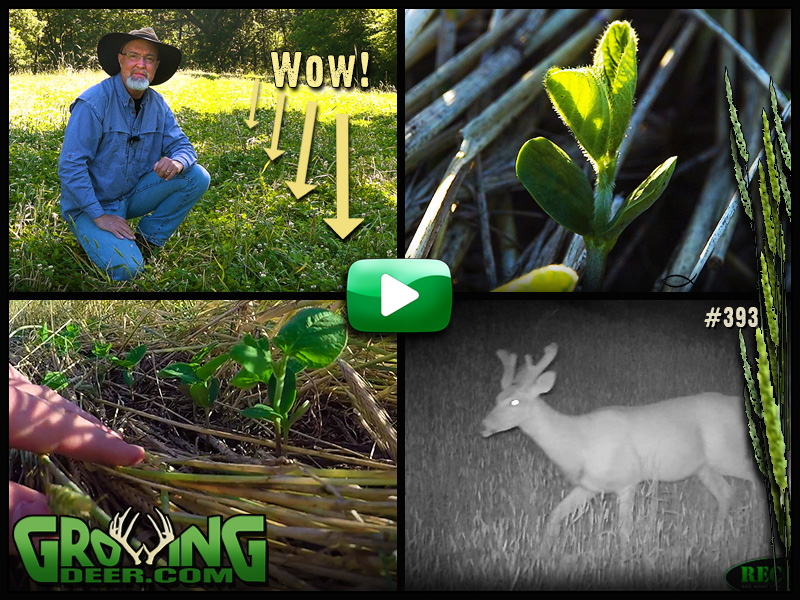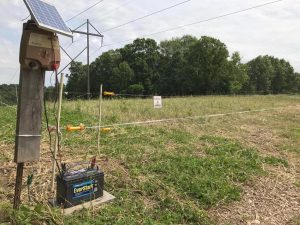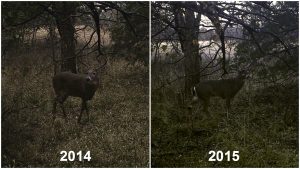Category: Food Plots
Food Plots: Learning and Growing
Food plot establishment and management techniques and the seed varieties have improved significantly during the past 25+ years. In 1995 Tracy and I visited New Zealand to learn about the forage varieties they grew to enhance antler growth in the red deer raised for meat and velvet antlers. From that visit, we brought back information that transformed the way I approached food plots and forage for whitetails.
On my hunting property (which I refer to as The Proving Grounds) I’ve researched, tested and implemented food plot practices and seed blends that maximize the quantity of quality forage. If these seed blends and rotations work here they will work on any property in the whitetails’ range. I’ve found a partner in Eagle Seed that combines my research and their expertise to get quality seed and seed blends with the right ratio of forage blends so that food plots are easily successful for food plot farmers.
I use Eagle Seed’s fall blend. This blend serves as a time released food plot throughout the hunting season with some varieties growing and being more attractive during the early, mid, and late season. The blend produces an attractive food source throughout the entire fall. It’s the backbone of our hunting sites and providing the herd quality forage throughout the fall and winter.
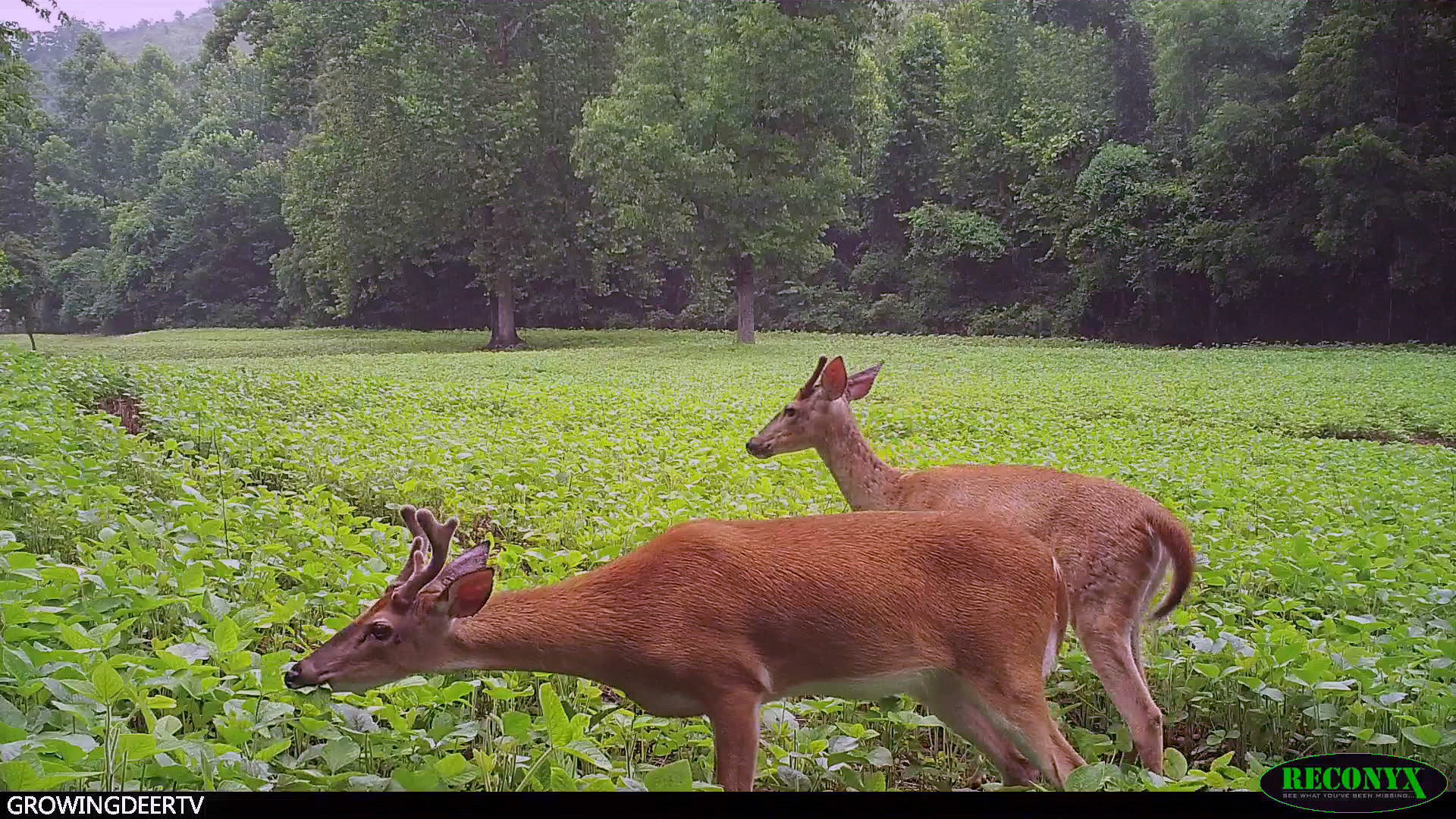
I’ve used Eagle Seed forage soybeans for many years. Eagle Seed forage soybeans provide the most quality forage for the longest time of any crop I’ve tested. Several universities have also published on the amount of quality forage these soybeans produce! Deer forage on the Eagle Seed forage soybeans green leaves then the standing grain after frost. Young soybeans are one of the most attractive plants to deer. In areas with a high deer population or in small food plots it can be difficult to maintain a healthy stand of soybeans due to heavy browse pressure. This problem can be solved with trigger finger management (reducing the number of deer) or using a small electric fence and protecting the young soybeans
Poor soil quality can limit forage growth and make it taste bitter. Building a good layer of soil over time can do wonders for food plots. Due to past forest and land practices, there was not a good layer of soil at The Proving Grounds when Tracy and I purchased it. Through the years I’ve learned techniques we call the Buffalo System to improve the soil and forage quality. This soil quality improvement system is less expensive and requires less time than the traditional lime, fertilizer, till and plant system. I’ll be sharing more on the Buffalo System throughout videos coming soon.
Regardless of where you hunt, you should focus on getting deer the nutrients that they need to grow healthy and strong. You can create the opportunity for a memorable hunting season next fall by maintaining great food plots during the coming year. If you’re new to food plots, click HERE to see videos showing the details of our food plots programs over the years or use the search function on this website to learn about a specific technique or food plot crop.
Growing food plots and enjoying Creation,
Grant
Tip for Food Plot Success: Wait On Warmer Soil
It’s been raining or snowing throughout much of the whitetail’s range recently. This unusually cold, wet spring has affected not only the turkey hunting, but also delayed our spring food plots. These same conditions of being too cold and wet extend across much of the country.
Most crops that are planted this time of year have a relatively large and soft seed, such as Eagle Seed forage soybeans, corn, sunflowers, etc. These soft, large seeds easily absorb water as part of their germination process. They also need water to break dormancy yet also require a minimal temperature to begin the germination process combined with a higher temperature to stimulate and increase the rate of germination and development.
Cold water (without an increase in soil temperature) will often result in the seeds swelling but not germinating or germinating and dying. The longer a seed, especially a relatively soft seed, remains in the soil without germinating there are more chances for insects, diseases, or fungus to attack.
The result of delayed germination of soft seeds is almost always a reduced seed and/or plant vigor. It’s common for 50% or more of large soft seeds that are planted during bad conditions (especially when it’s too cold and wet) to die in the ground before they germinate. The surviving seeds can have reduced vitality even as a maturing plant (like a fawn that received poor nutrition during development or the first few months of life).
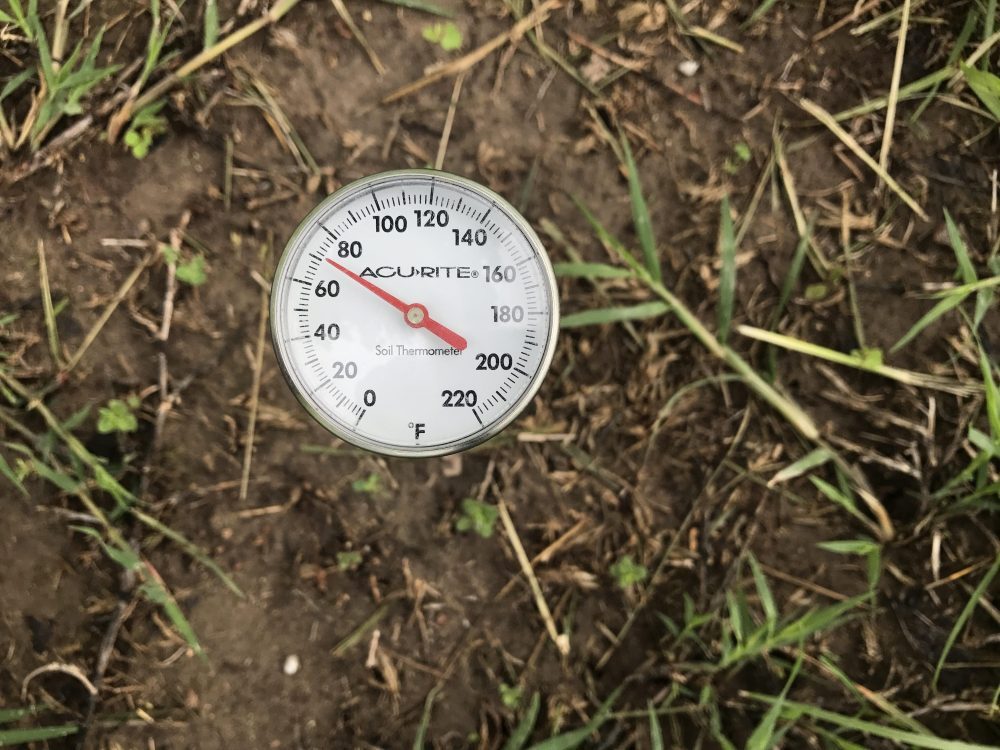
The first tip to ensure that you have a successful food plot crop is to plant when the soil temperature is within the correct range for your seed. For example, soybeans have the best germination rate when there’s adequate but not too much soil moisture and the soil temperature is a minimum of 60 degrees.
Soil scientists recommend testing the soil temperature at 9 am as this is usually the coldest time of day at 2” deep in the soil. The soil cools all night and begins to warm once the sun is at an angle that its radiant heat impacts the soil.
One of the best tools to ensure a successful crop is a soil thermometer or checking one of the many soil temperature websites. I use a soil thermometer (usually about $10 at most feed and seed stores) as soil cover, color of soil, soil moisture etc., all can affect the soil temperature substantially from field to field.
If you’re planting food plots soon, don’t count on going by traditional or published planting dates. For the best chance of success plant when the local conditions are appropriate with soil temperature and enough moisture to ensure germination and growth.
As we’ve all seen recently it’s vitally important to keep an eye on the extended weather forecast!
Planting food plots and enjoying creation,
Grant
Bucks: It’s happening now. – Episode #406
New Video
Grant shares tricks for aging bucks in the field as we develop the 2017 hit list. Also, follow the team as they help landowners in Oklahoma and central Missouri improve the food plots and habitat on their properties. Gene Price from Trophy Rock stops by with a great new technique to improve food plots and make quality minerals available to a deer herd in any state.
New Weekly Blog:
Here is a new recipe from Tracy for cooking a venison ball roast!
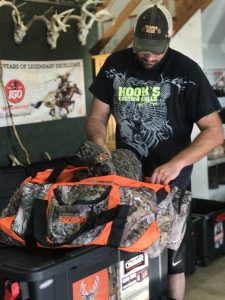
Tip of the Week:
Scent control long before we get to the field! Clothes and gear need to be treated and stored to reduce scent. This is especially true when traveling.
Food Plots vs. Deer, Plus Frog Hunting – Episode #399
New Video
See how Grant has and is still learning to use his food plot observations to make future management decisions. Managing both food and deer numbers is key! See effective tips on how to trap those pesky groundhogs. Plus, Grant shares how frog hunting is great practice for the upcoming deer season!
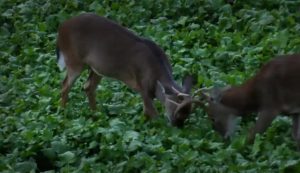 Short Clip:
Short Clip:
We can’t wait to see hard antlers this deer season! Here’s a tangled up mess of antlers to enjoy!
New Weekly Blog:
Everyone wants to hunt flat, row crop states like Kansas or Iowa. However, even if you have steep terrain in non row crop areas you can utilize these techniques to help produce quality whitetails!
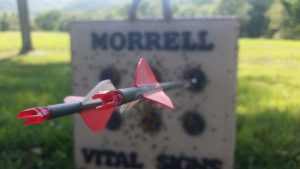
Tip of the Week:
Shooting dots is a great way to get your bow dialed in before shooting at an outline or 3D target of a deer!
Deer Season Prep: Creating New Food Plots – Episode #396
New Video
Grant and the interns design a new food plot! Watch to see the thoughts and steps to creating a food plot from scratch. It’s a strategy designed to produce quality food and hunting in rough timber. Plus, we share tips on how to capture great trail camera pictures of fawns, does, and of course, BUCKS!
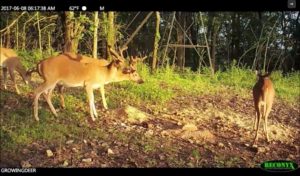 Short Clip:
Short Clip:
We love seeing ANTLERS! Enjoy our recent Reconyx videos of velvet bucks!
New Weekly Blog:
Quality cover and designated sanctuaries can result in a healthier deer herd and better hunting! Find out why cover is key for managing mature, huntable whitetails!
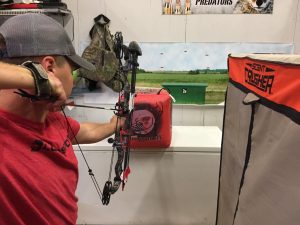
Tip of the Week:
Blind bale shooting, or shooting a close target with your eyes closed, is a great way to slow down and focus on shooting form!
Great Management, Great Results! – Episode #395
New Video
Want to maximize your hunting property? This week we share even MORE tips for maximizing food plot acreage, soil moisture, native browse and cover! See how our management practices can help your property express its hunting potential!
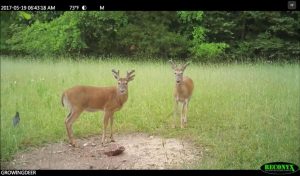 Short Clip:
Short Clip:
Antlers continue to grow and it won’t be long before we start creating our 2017 hit list! Check out several bucks that have already caught our eye!
New Weekly Blog:
Age and quality forage are key for growing larger antlers! Find out how making quality forage available year round can help bucks express their antler potential and create better hunting!
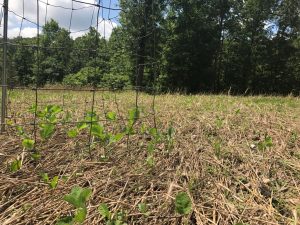
Tip of the Week:
Utilization cages can be a great indicator of deer numbers compared to available food. If crops inside the cage are taller than outside, you may need to increase food plot acreage or harvest more deer this fall.
Maximize Your Food Plots! – Episode #393
New Video
See how we maximize one of our most valuable resources for deer hunting: food plot acreage! Plus, an update with observations and analysis of the progress of recently planted fields.
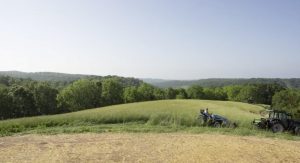 Short Clip:
Short Clip:
See how the Goliath crimper and the Genesis drill work together to plant an entire field in this short time-lapse video clip!
New Weekly Blog:
If you wish to save quality forage for early deer season or allow beans to mature to hunt over standing grain this winter, the preparation starts now! Click here to read this “step by step” guide on how to get started.
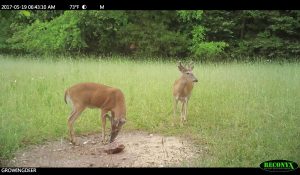
Tip of the Week:
Keep up with the antler development by placing your trail cameras out during summer! Trophy Rocks are a great way to get bucks in front of trail cameras!
The Benefits Of Roller Crimping
Earlier this week I was turkey hunting in Kansas. As my hunting partner and I drove around looking for toms on public land, I noticed that many farmers had begun preparing for planting season. There were one or two farmers that gambled on good weather and had already put seed in the ground several weeks earlier. Everyone else was just starting to spray or work their fields.
As we walked across some large ag fields in search of toms, I couldn’t help but notice how bare and dry the soil was. I picked up several clumps of dirt and with a slight squeeze watched as they fell apart. Not ideal soil. On top of that, I noticed erosion. Even in fields that had been terraced (designed and built to reduce erosion) and planted with the contour of the land, there were signs of water erosion.
During the hunt, I couldn’t help but compare my observations in Kansas to those at The Proving Grounds. There was one obvious difference, the use of cover crops.
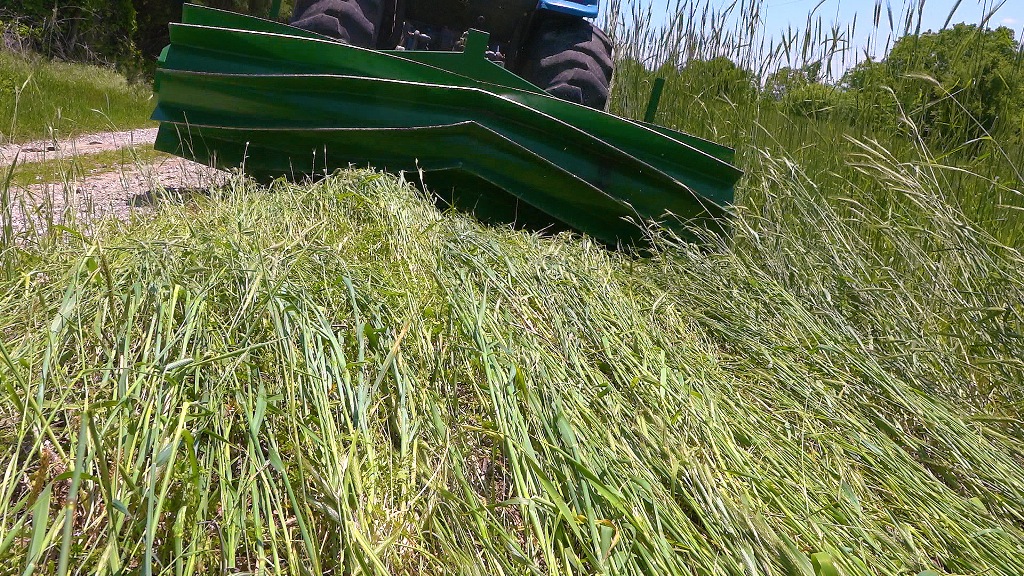
The roller crimper lays the winter rye down while crushing the stem, terminating the crop without the use of herbicide.
The soil at The Proving Grounds is never left uncovered. Last summer we mixed winter rye into Eagle Seed Broadside for a fall food plot blend. The winter rye has grown very well and helped hold moisture in the soil. We had several torrential rainfalls that eroded our roads but left our food plots unscarred. Our soil is still intact and healthy.
Like many farms we are preparing for planting, only we will be planting small summer food plots. We too will terminate the vegetation in our fields (in our case the winter rye) before we plant Eagle Seed soybeans. We terminate the rye to reduce the soybeans’ competition for nutrients, water, etc.
Unlike the farmers I watched spray weeds, we do not have many weeds in our plots. The winter rye has kept weeds from growing. One great thing about using the winter rye to protect our fields from erosion and weeds is that we are able to terminate the rye without the use of herbicide. We simply use a roller crimper.
A roller crimper, like a traditional roller, will lay the vegetation down. However, the addition of the crimper’s angled metal outcroppings will break the stem on the rye. By breaking the stem, the rye can no longer carry water or nutrients throughout the stalk and dies. This dead vegetation is now left on the soil and becomes a slow releasing fertilizer building organic matter and creating a layer of mulch that protects the soil from erosion, moisture loss, and weeds. The process of roller crimping replicates what large herds of buffalo did on the great prairie years ago as they trampled the native vegetation. This is exactly what created the soil that farmers in Kansas and other states now benefit from.
Though I was unsuccessful tagging a tom in Kansas, the trip was a gentle reminder of the differences in land management practices. As land managers, we can have great benefits (healthier soil) and cost reduction (reduced herbicide and fertilizer) by how we chose to manage our food plots this spring. Stay tuned this growing season as we keep you updated on our food plot management techniques!
Enjoying Creation,
Daniel Mallette
Strut Zone Prep – Episode #382
New Video
Watch the GrowingDeer Team frost seed clover and prepare a great food source for not only deer but turkey too! These clover plots will soon be great strutting areas for toms and purr-fect hunting locations. Find out how we plan to hunt these plots and others with our Montana Decoys!
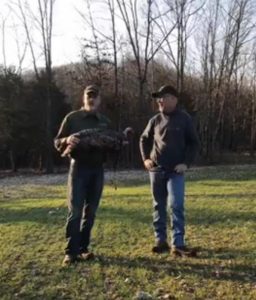 Short Clip:
Short Clip:
Watch Grant and CJ Davis from Montana Decoy share their turkey hunting tips, tricks, and techniques!
New Weekly Blog:
Tyler Gentry shares how multiple years of trail camera pictures helped him tag a buck last fall. Find out how you can use trail cameras to punch a tag!
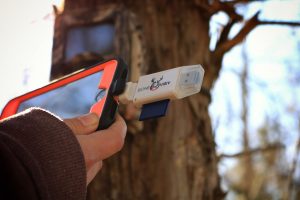
Tip of the Week:
When trying to pattern ol’ toms with trail cameras, checking pictures in the field can save a lot of time!
Soil Samples and Healthy Roots
Soil is the foundation that a food plot stands on, so it’s important to know how solid that foundation really is. A soil sample is a quick and easy tool that can help you maximize your food plot’s yield and save you time and money when it comes to fertilizing. Taking the sample is simple and only takes a few minutes to collect. All you need is a shovel or a soil probe, a bucket and some plastic bags.
Your local extension office can test the soil for you, or you can choose to use a private lab. We use Waters Agricultural Laboratories because of their quick service and we want our plots tested for maximum yield instead of the most economic yield, which is what most extension offices provide.
By taking a soil sample for every food plot, you can determine exactly how much fertilizer or lime is necessary for each plot to produce quality forage. This saves money and healthy plants are much more attractive (palatable) to deer than malnourished forage.
Jesus tells us in Matthew 13 that seeds cast on poor soil will quickly wither and die. This is true both spiritually and literally. If your plants, or your faith, are not rooted in quality soil, there is no way either can grow to their full potential. Make sure you’re taking care of both.
Enjoy Creation,
Jessica



